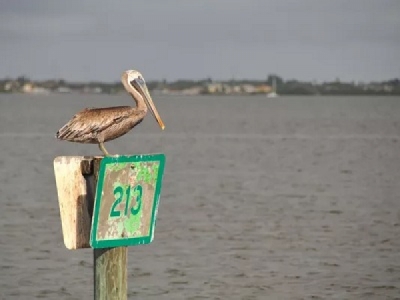
Posted on September 19, 2018
It’s no secret the Indian River Lagoon is in a state of ecological collapse. The efforts of those involved in planning and executing IRL restoration deserve our gratitude. Nonetheless, we believe that some of the priorities of the Brevard County restoration plan funded by a half-cent sales tax are misaligned. This is the order of priorities as we see them.
Everyone agrees that the first step is to stabilize the IRL. This is why dredging muck — the legacy of decades of mismanagement — is important. However, muck dredging is receiving too much of the available funds. The muck removal process is not as effective as it first appeared in the Save the Lagoon Plan because leaching from the biosolids removed from dredging are quickly returning into the IRL. More important, less funding is available to address fixing the sources of the illness.
More: Lagoon, Lake O future in “our hands,” group says
The top priority should be addressing the top inputs of nutrients into the IRL: septic and sewage. Failures of Brevard County’s outdated sewage treatment infrastructure have become regular news items. In addition, a significant portion of septic systems in Brevard County are introducing nutrients into the IRL. This will be expensive and time consuming, but it must be done for the long-term benefits. There are numerous examples from other locations of the benefits of this approach.
Harmful algae blooms seized the waters of the Indian River Lagoon, blotting out the sun and choking off oxygen to marine life. (Photo: Getty Images)
As Brevard County’s sewage infrastructure is modernized, it is essential that the system conducts advanced treatment that not only removes virtually all of the nutrients, but also the pharmaceuticals, pesticides, micro/nano plastics, and micro-fibers that are also in effluent.
Higher priority must also be given to education about sources of nutrients, including the use of fertilizers and the need for septic tank inspections and repairs. Though education efforts are ongoing and are well-intentioned, they are not adequate. What is needed is significant investment in an education and marketing campaign, the likes of which requires a professional firm.
More: Cancer-causing chemicals plague gators, dolphins in lagoon near Kennedy Space Center
Greater pressure must also be put on state and county agencies to improve their behavior, and this will only come from residents and political representatives who are informed. Chief among these is the Department of Transportation. A quick survey, for example, of U.S. Route 1 reveals many areas that drain directly into the IRL without any filtration from settlement ponds or marshes. This is injecting polluted water into the IRL every time it rains. The use of toxic herbicides to remove aquatic weeds and roadside grasses and plants must also end.
We are disturbed also by the amount of funds currently planned for restoration of seagrass and oysters. This restoration is akin to giving a lifetime smoker a lung transplant even though the patient won’t stop smoking. It’s essential that the causes of the declines of seagrass, oysters, and other similarly-impacted organisms are addressed and fixed before funds are spent on restoration — no matter how well-intentioned those efforts.
It took more than three decades for seagrass in Chesapeake Bay to return to pre-collapse levels. This was due largely to improvements in water quality rather than restoration. Millions of dollars were invested in oyster reef restoration in the St. Lucie River and Caloosahatchee River, but these restored reefs were largely wiped out by the original cause of their demise: freshwater discharges from Lake Okeechobee. The evidence is clear — fix the system before investing in rehabilitation.
Finally, we believe that engineering a new inlet is unwise. Experience with other estuaries (e.g. Tampa Bay, Chesapeake Bay) indicates that amount of flow is not the problem. The problem is the abundance of nutrients entering the system. The solution to pollution is not dilution.
We are concerned that a desire for a quick-fix and political expedience will short-circuit what experience in other estuaries tells us is a long-term process. The causes of the IRL’s ecological collapse didn’t happen overnight and recovery will be a similar long-term process. It’s important that we don’t take the bait of short-term gratification because it will impede true restoration in the end.
Aaron Adams of Melbourne Beach is the director of science and conservation for Bonefish & Tarpon Trust and a senior scientist at Harbor Branch Oceanographic Institute. Mitchell Roffer of Melbourne Beach is the founder and former owner of Roffer’s Ocean Fishing Forecasting Service Inc. and now president of Fishing Oceanography Inc., a company focused on fisheries research and environmental advocacy.
Source: florida today





